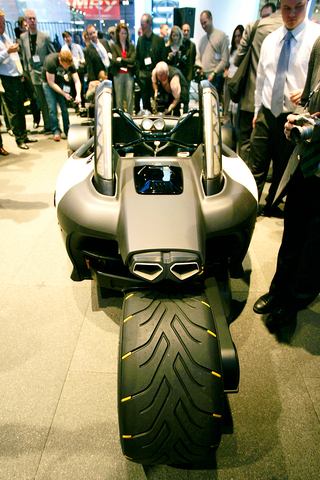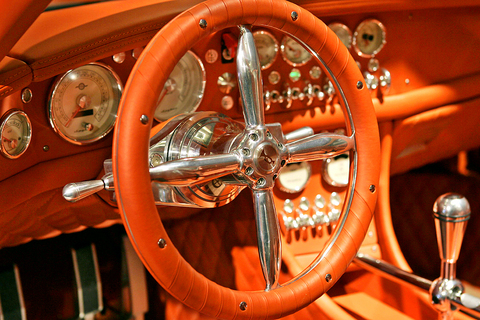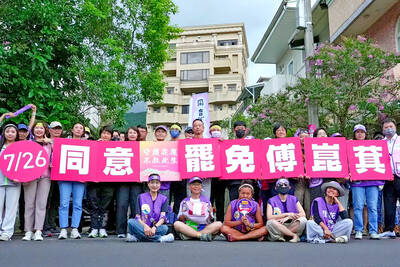It is not every day that a concept car rewrites the rules of more than 100 years of motoring. In development for four years by a team of architects and engineers led by William Mitchell, former head of the school of architecture at the Massachusetts Institute of Technology (MIT), as part of his Smart Cities research group, a new MIT car is borne of a complete rethink of people's relationship with their cars in the ever-expanding cities of the future.
Mitchell expects we will share cars that will be easier to drive in congested cities, will be pollution-free and can be customized at will.
The city car concept, with styling input by architect Frank Gehry, will be completed and delivered by MIT to General Motors early next year.

"Primarily we're interested in urban living," said Ryan Chin, an architect and engineer at MIT's media lab and a member of Mitchell's research group."Everything scales down from what we think the city of the future is."
The Smart Cities group focused on how cars could be better adapted to get round familiar problems of city life, namely congestion, pollution and parking. Motor companies are well aware of the issue.
But the group felt the companies had missed the point, even with city cars such as the Smart, the iconic two-passenger cars introduced by Swatch and Mercedes in 1998.

PHOTO: AP
"We have to think of city cars as not just small-footprint vehicles that can squeeze into tight spaces but ones that can work in unison and also be almost like a parasite that leeches on to mass-transit systems," Chin said.
While Smart changed the way people think about parking and size, the MIT engineers felt that, as it had not been widely adopted and congestion and pollution problems had got no better, its success had been limited.
So the MIT team started from scratch to come up with their own concept: a stackable, shareable, electric, two-passenger car.

PHOTO:AP
"Imagine a shopping cart -- a vehicle that can stack -- you can take the first vehicle out of a stack and off you go," Chin said. "These stacks would be placed throughout the city. A good place would be outside a subway station or a bus line or an airport, places where there's a convergence of transportation lines and people."
The precedent for this type of shared personal transport is demonstrated with bicycle-sharing schemes in European towns and the ZipCar and FlexCar projects on the east and west coasts of the US respectively.
The MIT concept car is a complete rethink of vehicle technology. For a start, there is no engine, at least in the traditional sense. The power comes from devices called wheel robots.
"These are self-contained wheel units that have electric motors inside," Chin said. "The interesting thing is that the wheel can turn a full 360 degrees so you can have omni-directional wheel movements. You can rotate the car while you're moving, any direction can be front or back and you can do things like crabbing or translate sideways. It's almost like you imagine yourself driving a computer chair."
The wheel robots, complete with their own suspension, remove the need for a drive shaft and even the engine block, freeing up designers to make new use of the space in the car.
"Essentially the car will comprise four wheel-robots plus a customizable chassis," Chin said. "The frame can be built specifically for each customer."
Add wafer-thin, programmable displays that cover the interior and exterior of the car like a layer of paint, and you have a vehicle that can be customized at will.
"You can imagine signalling being not just a static signal light but something more dynamic," said Chin, who suggests the words "reversing" or "turning left" could roll across the car's body to declare the driver's intentions. "From a heating and cooling point of view, you might want your car to be darker or lighter depending on weather. On the interior, you can customize your dashboard for each person. If I'm an elderly person, I probably want a very large speedometer so I can see it; if I'm a race-car driver, maybe all I want is a tachometer."
The close proximity of cars in cities increases the risk of accidents, and the MIT car has a host of radical ideas to deal with this problem. Chief safety features include responsive seats that do away with the need for seat belts and air bags: these are based around a spine at the back of the seat with a number of "fingers" to embrace a passenger and hold them in place if the car detects that it is involved in an accident. And the cabin would absorb the impacts of crashes using new materials.
"There is a new development in fluids that can be magnetized so that they move from liquid to solid state within a nanosecond. You can imagine using these fluids as a way of absorbing energy in an impact," Chin said.
Over the next few months the MIT team will complete the final design and present their results to General Motors, which will build the first prototype. Beyond that, Chin is already trying to arrange a public test in the Far East.
"We might do this in Hong Kong or in Singapore," he said. "The interest in those places is that they are very dense, have mass transit and limited range. An island like Hong Kong would be a perfect place to test this because you have all those conditions."
Whether the city car concept appears on garage forecourts as designed by the Smart Cities group or whether the technologies are taken forward individually remains to be seen. Chin says the group would be happy with either outcome.

When life gives you trees, make paper. That was one of the first thoughts to cross my mind as I explored what’s now called Chung Hsing Cultural and Creative Park (中興文化創意園區, CHCCP) in Yilan County’s Wujie Township (五結). Northeast Taiwan boasts an abundance of forest resources. Yilan County is home to both Taipingshan National Forest Recreation Area (太平山國家森林遊樂區) — by far the largest reserve of its kind in the country — and Makauy Ecological Park (馬告生態園區, see “Towering trees and a tranquil lake” in the May 13, 2022 edition of this newspaper). So it was inevitable that industrial-scale paper making would

July 21 to July 27 If the “Taiwan Independence Association” (TIA) incident had happened four years earlier, it probably wouldn’t have caused much of an uproar. But the arrest of four young suspected independence activists in the early hours of May 9, 1991, sparked outrage, with many denouncing it as a return to the White Terror — a time when anyone could be detained for suspected seditious activity. Not only had martial law been lifted in 1987, just days earlier on May 1, the government had abolished the Temporary Provisions Effective During the Period of National Mobilization for Suppression of the Communist

Hualien lawmaker Fu Kun-chi (傅?萁) is the prime target of the recall campaigns. They want to bring him and everything he represents crashing down. This is an existential test for Fu and a critical symbolic test for the campaigners. It is also a crucial test for both the Chinese Nationalist Party (KMT) and a personal one for party Chairman Eric Chu (朱立倫). Why is Fu such a lightning rod? LOCAL LORD At the dawn of the 2020s, Fu, running as an independent candidate, beat incumbent Democratic Progressive Party (DPP) lawmaker Hsiao Bi-khim (蕭美琴) and a KMT candidate to return to the legislature representing

Asked to define sex, most people will say it means penetration and anything else is just “foreplay,” says Kate Moyle, a psychosexual and relationship therapist, and author of The Science of Sex. “This pedestals intercourse as ‘real sex’ and other sexual acts as something done before penetration rather than as deserving credit in their own right,” she says. Lesbian, bisexual and gay people tend to have a broader definition. Sex education historically revolved around reproduction (therefore penetration), which is just one of hundreds of reasons people have sex. If you think of penetration as the sex you “should” be having, you might